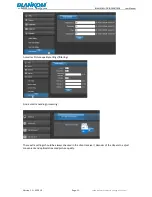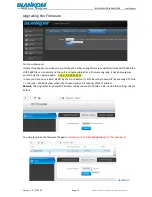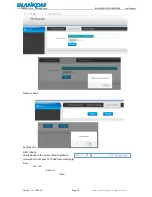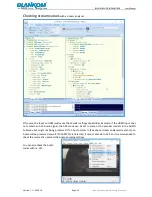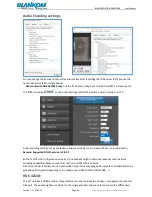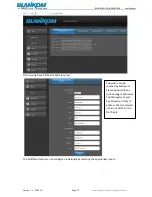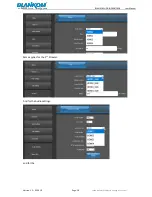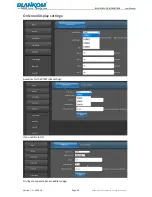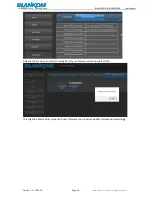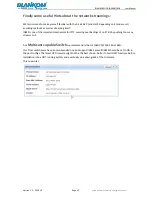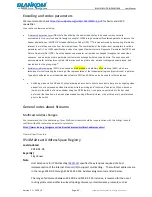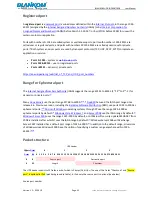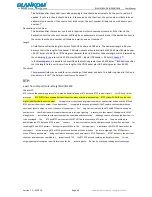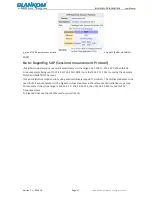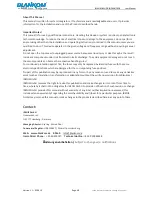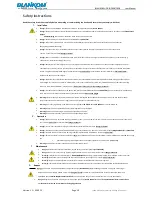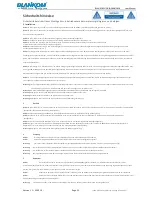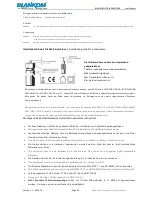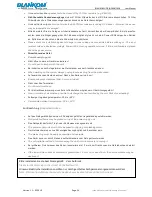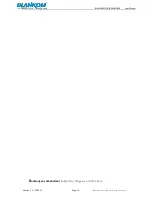
BLANKOM HDE-(4)264B/265B User Manual
Version 1.1 – 02-2019
Page - 45 -
techn. data are subject to change w/o notice!
Registered port
A
registered port
is a
network port
(a sub-address defined within the
Internet Protocol
, in the range 1024–
49151) assigned by the
Internet Assigned Numbers Authority
(IANA) (or by
Internet Corporation for
Assigned Names and Numbers
(ICANN) before March 21, 2001,
[1]
or by USC/ISI before 1998) for use with a
certain protocol or application.
Ports with numbers 0–1023 are called
system or well-known ports
; ports with numbers 1024-49151 are
called
user or registered ports
, and ports with numbers 49152-65535 are called
dynamic and/or private
ports
.
[2]
Both system and user ports are used by transport protocols (TCP, UDP, DCCP, SCTP) to indicate an
application or service.
Ports 0–1023
– system or
well-known ports
Ports 1024–49151
– user or registered ports
Ports >49151
– dynamic / private ports
https://en.wikipedia.org/wiki/List_of_TCP_and_UDP_port_numbers
Range for Ephemeral port
The
Internet Assigned Numbers Authority
(IANA) suggests the range 49152 to 65535 (2
15
+2
14
to 2
16
−1) for
dynamic or private ports.
[1]
Many
Linux kernels
use the port range 32768 to 61000.
[note 2]
FreeBSD
has used the IANA port range since
release 4.6. Previous versions, including the
Berkeley Software Distribution
(BSD), use ports 1024 to 5000 as
ephemeral ports.
[2][3]
Microsoft Windows
operating systems through XP use the range 1025–5000 as
ephemeral ports by default.
[4]
Windows Vista
,
Windows 7
, and
Server 2008
use the IANA range by default.
[5]
Windows Server 2003
uses the range 1025–5000 by default, until Microsoft security update MS08-037 from
2008 is installed, after which it uses the IANA range by default.
[6]
Windows Server 2008 with Exchange
Server 2007 installed has a default port range of 1025–60000.
[7]
In addition to the default range, all versions
of Windows since Windows 2000 have the option of specifying a custom range anywhere within 1025–
65535.
[8][9]
Packet structure
UDP Header
Offsets
Octet
0
1
2
3
Octet
Bit
0 1 2 3 4 5 6 7 8 9 10 11 12 13 14 15 16 17 18 19 20 21 22 23 24 25 26 27 28 29 30 31
0
0
Source port
Destination port
4
32
Length
Checksum
The UDP header consists of 4 fields, each of which is 2 bytes (16 bits).
[1]
The use of the fields "Checksum" and "Source
port" is optional in IPv4 (pink background in table). In IPv6 only the source port is optional (see below).
Source port number

